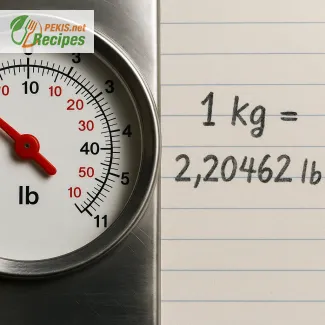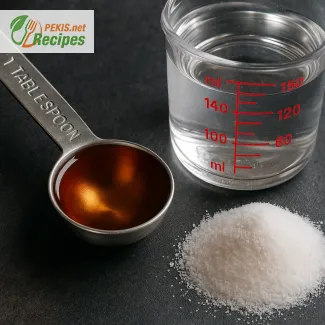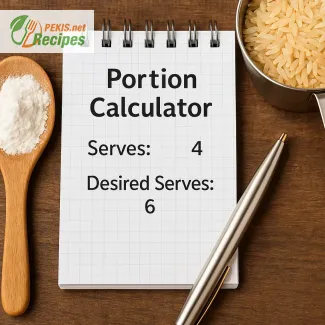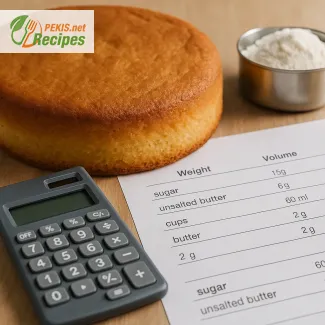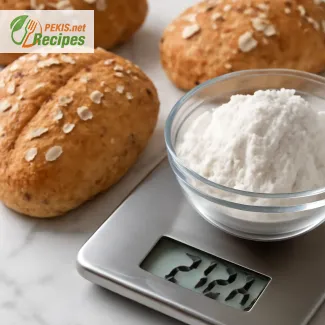
Understanding the 60 lbs to kg Conversion in Real-Life Contexts
Why this specific weight matters in kitchens, shipping, and everyday use
Converting 60 lbs to kg may seem like a simple task, but this specific weight comes up more often than you might think—especially in culinary settings, international shipping, fitness tracking, and everyday household estimates. Whether you're following a recipe from the U.S., buying ingredients in bulk, or checking luggage weight limits, knowing how to interpret 60 pounds in kilograms can save you time, money, and mistakes.
To help you confidently navigate between imperial and metric units, this guide offers a clear explanation of how to convert 60 lbs to kg, where you might encounter this weight, and why accuracy matters—especially in kitchens and logistics. Unlike generic converters, we give you real-world applications with context and nuance.
The basic math: how to convert 60 lbs to kilograms
To convert pounds (lbs) into kilograms (kg), the conversion factor is constant:
1 pound = 0.45359237 kilograms
This means:
60 lbs × 0.45359237 = 27.2155422 kg
So, 60 lbs is approximately 27.22 kg when rounded to two decimal places.
This value is precise enough for most culinary and household uses. For example, when preparing ingredients for a large event or converting food portions for nutritional planning, this level of precision ensures your measurements are both consistent and safe.
Why 60 lbs is a common threshold in daily life
Cooking in bulk or for events
In professional kitchens or family gatherings, it’s not unusual to deal with quantities like 60 lbs of meat, produce, or flour. For instance, a 60-pound turkey is often a reference point during large holiday meals in the U.S. Understanding how much that equals in kilograms (27.22 kg) is helpful if you're shopping or cooking in Europe, where recipes and butchers use metric measurements.
Shipping, luggage, and postal services
Many airlines and courier services use pounds to define baggage or parcel weight limits. A common airline baggage allowance might be 50–60 lbs, so converting that to 27.2 kg helps avoid unexpected charges when flying internationally.
Gym equipment and weights
In fitness programs, especially those blending U.S. and international resources, weights like 60 lbs dumbbells or kettlebells often appear in training plans. For those accustomed to the metric system, it's helpful to know this translates to around 27.2 kg, allowing for better comparisons in equipment and workout load.
Why accuracy in conversions is essential in cooking
When scaling recipes or working with precise ingredients like yeast, salt, or baking powder, even small discrepancies in weight can affect taste and texture. Imagine converting a U.S. recipe that calls for 60 lbs of flour for a commercial bakery. If you underestimate that amount due to a poor conversion, the consistency of the dough or batter may suffer, and you could end up with product loss or customer complaints.
Precision is also important when using digital kitchen scales, where some models allow for toggling between metric and imperial units. Knowing exact values helps you double-check conversions rather than relying solely on preprogrammed settings.
How to remember this conversion (and similar ones)
A few easy-to-remember benchmarks
- 1 lb ≈ 0.45 kg
- 10 lbs ≈ 4.54 kg
- 60 lbs ≈ 27.22 kg
- 100 lbs ≈ 45.36 kg
By rounding slightly (e.g., 0.45 instead of 0.45359237), you can do mental calculations quickly while still staying close to the actual value—especially useful in market situations or while shopping abroad.
Kitchen-friendly tips for converting weights
Keep a conversion chart nearby
If you’re working in a kitchen that frequently switches between U.S. recipes and metric measurements, keep a laminated chart or conversion sticker on your prep table, oven, or fridge. Include common weights like:
- 5 lbs → 2.27 kg
- 10 lbs → 4.54 kg
- 20 lbs → 9.07 kg
- 60 lbs → 27.22 kg
This helps cut down on guesswork and prevents costly measurement mistakes.
Use digital tools—but know the math
Many recipe platforms and kitchen apps include built-in converters. However, understanding the logic behind the numbers helps you double-check results, especially when dealing with large batches or expensive ingredients. A recipe that fails due to a faulty automatic conversion can mean a significant waste of time and resources.
Real-world example: Converting 60 lbs of flour
Let’s say a U.S.-based bakery is expanding into Europe. Their signature recipe requires 60 lbs of flour per batch. That translates to 27.22 kg. If the head baker uses only 25 kg, the recipe will be underdeveloped, causing differences in texture, rise, and crumb structure.
Using the exact conversion ensures the consistency of products across markets, crucial for franchise operations or international expansion.
What to avoid when converting pounds to kilograms
- Relying on rough guesses like "a kilo is about two pounds" – this often leads to over- or underestimation.
- Skipping rounding rules – don’t round too early in the calculation, especially with sensitive recipes.
- Confusing weight with volume – 60 lbs of sugar and 60 lbs of apples take up vastly different amounts of space, but weigh the same. Make sure you're not using ml or cups when you should be thinking in mass (kg or lbs).
When is it okay to round?
For everyday use: Yes
If you’re just estimating for luggage or a workout, rounding 60 lbs to 27 kg is perfectly fine.
For baking or food manufacturing: No
Stick to at least two decimal places (27.22 kg) to ensure formulaic accuracy, especially when multiplying quantities or creating documentation.
Know the number, use it with confidence
Whether you’re a home cook, professional chef, traveler, or trainer, understanding how to convert 60 lbs to kg (27.22 kg) gives you an edge in precision, planning, and problem-solving. By combining basic math, practical application, and an awareness of why it matters, you’ll avoid costly mistakes and work more fluidly across measurement systems.
The next time you see 60 lbs on a label, recipe, or ticket, you’ll know exactly how much that is—and why it matters.
